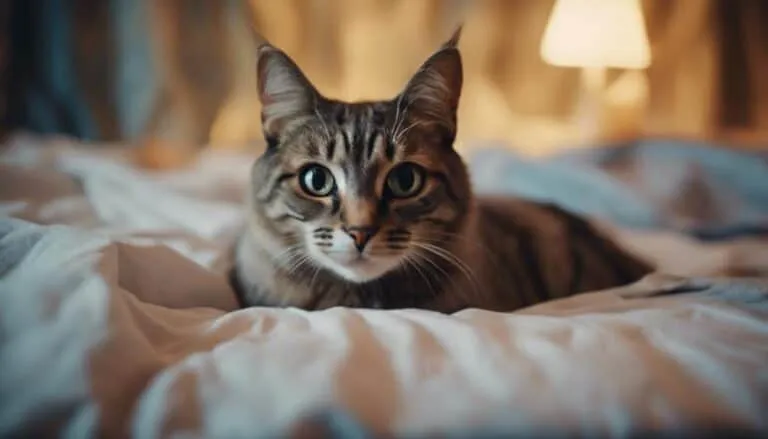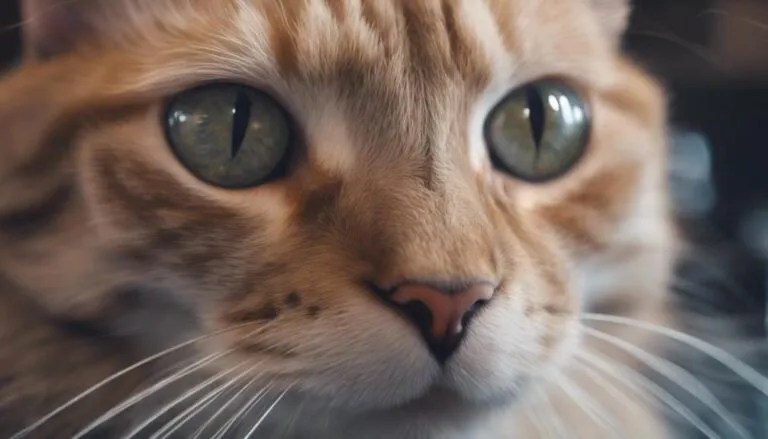The Best Fluffy Pancakes recipe you will fall in love with. Full of tips and tricks to help you make the best pancakes.

Are you tired of navigating through a minefield of litterbox mishaps? It's time to clean up your act and master the art of litterbox training.
Picture a harmonious home where accidents are a thing of the past, and your kitten confidently uses the litterbox every time.
In this discussion, we will unveil the secrets to achieving this feline utopia. So, buckle up and get ready to discover the key steps and insider tips that will transform your litterbox training journey from a struggle to a success.
Key Takeaways
- Provide easy access to the litterbox and ensure your kitten can find it easily.
- Consider getting multiple litterboxes to prevent problems and ensure availability.
- Choose a litterbox size that allows your kitten to easily get in and out.
- Experiment with different types of litter to find what works best for you and your kitten.
Litterbox Training Process
To successfully litterbox train your kitten, consistency and proper guidance are key. Litterbox training techniques involve providing a suitable litterbox and helping your kitten understand bathroom etiquette.
Most kittens instinctively want to use a litterbox because of their natural instinct to bury their waste. However, some kittens may require additional help and patience. Troubleshooting litterbox issues may involve ensuring that the litterbox is easily accessible for your kitten, that they can enter and exit it comfortably, and that they aren't averse to the type of litter being used.
It's recommended to have more than one litterbox, with at least one more than the number of cats or kittens you have. Additionally, choosing the right litterbox size and type, as well as using a quality scooper and appropriate cat litter, can contribute to a successful litterbox training process.
Choosing the Right Litterbox
Consider getting multiple litterboxes to ensure availability and prevent any potential problems during the litterbox training process.
When choosing the right litterbox, it's important to consider the litterbox size and design. The size of the litterbox should allow your kitten to easily get in and out without feeling cramped. Shallow litterboxes are great for potty-training kittens as they provide easy access and allow them to see inside.
Additionally, the litterbox design should be simple and open-style, making it easier for your kitten to navigate. One highly recommended option is the Van Ness line of litterboxes. These litterboxes are small, simple, and budget-friendly, making them a great choice for kittens.
Investing in the right litterbox will help ensure your kitten's comfort and success in using the litterbox consistently.
Recommended Litterbox Option
When it comes to choosing the right litterbox for your kitten, the Van Ness line of litterboxes is highly recommended for its simplicity, small size, and open-style design.
These litterboxes are perfect for kittens because they're small and easy to access, with a height of only 3.5 inches. The open-style design allows for easy entry and exit, making it convenient for your little furry friend.
One of the benefits of the Van Ness litterboxes is that they're budget-friendly, so you won't have to break the bank. Additionally, they're widely available on platforms like Amazon, making it easy for you to purchase one.
Transitioning to a different litterbox brand can be a smooth process if you follow a few tips. Start by placing the new litterbox next to the old one, gradually moving it to the desired location. Also, try mixing a small amount of the new litter with the old litter to help your kitten get used to the change.
Importance of a Litter Scoop
Using a litter scoop is essential for maintaining a clean and hygienic litterbox for your cat's well-being. Regular cleaning of the litterbox has several benefits, including preventing odors, reducing the risk of infections, and ensuring that your cat has a pleasant and comfortable experience.
A good quality litter scoop, such as the one from DuraScoop, is recommended for effective cleaning. This scooper is durable and can last for years, making it a worthwhile investment.
When introducing a kitten to the litter scoop, it's important to do so gradually and patiently. Start by placing the scoop near the litterbox and allow the kitten to explore and get used to its presence. Gradually, you can demonstrate how to use the scoop by gently scooping the litter. Reward your kitten with treats or praise to encourage positive associations with the scoop.
With time and consistency, your kitten will become familiar with the litter scoop and the importance of keeping the litterbox clean.
Choosing the Right Cat Litter
Maintaining a clean and hygienic litterbox is crucial for your cat's well-being, and choosing the right cat litter plays a significant role in achieving this.
When it comes to cat litter options, there are a few factors to consider. Firstly, think about the texture of the litter. Cats prefer a soft area they can dig, so opt for litter that provides a comfortable experience for them.
Additionally, consider the messiness of the litter, especially for kittens who are just starting out. Look for litter that clumps well and is easy to clean, as this will make your life easier.
Finally, when introducing litter to kittens, start with a shallow litterbox that allows them to easily get in and out, and choose a litter that they find appealing.
Frequently Asked Questions
How Long Does It Typically Take to Litterbox Train a Kitten?
Litterbox training usually takes a few weeks, but it can vary depending on the kitten. Common challenges include confusion and not liking the litter. Consistent effort and providing a suitable litterbox can help overcome these challenges.
What Should I Do if My Kitten Refuses to Use the Litterbox?
If your kitten refuses to use the litterbox, try troubleshooting litterbox training issues. Ensure the litterbox is accessible and clean, use positive reinforcement, and consult a veterinarian if necessary. Patience and consistency are key.
Can I Use a Regular Household Item as a Litterbox Alternative?
No, using a regular household item as a litterbox alternative is not recommended. It can confuse your kitten and lead to accidents. Stick to proper litterboxes and avoid common mistakes for successful litterbox training.
How Often Should I Clean the Litterbox?
To prevent litterbox odors and keep your cat happy, clean the litterbox at least once a day. Choose the right litter that clumps well and is easy to clean, ensuring a comfortable experience for your cat.
Is It Normal for My Kitten to Play in the Litterbox?
It is not uncommon for kittens to play in the litterbox. This behavior can be a result of curiosity or boredom. However, it's important to discourage this behavior to avoid litterbox distractions and maintain proper hygiene.
Conclusion
Congratulations! You've now become a litterbox training master! With the right approach and tools, you've created a clean and comfortable environment for both you and your kitten.
No more messes to clean up, thanks to the perfect litterbox and cat litter you've chosen. And let's not forget the litter scoop, the unsung hero in keeping the litterbox fresh and your cat happy.
So sit back, relax, and enjoy a litterbox that's always clean and odor-free.








